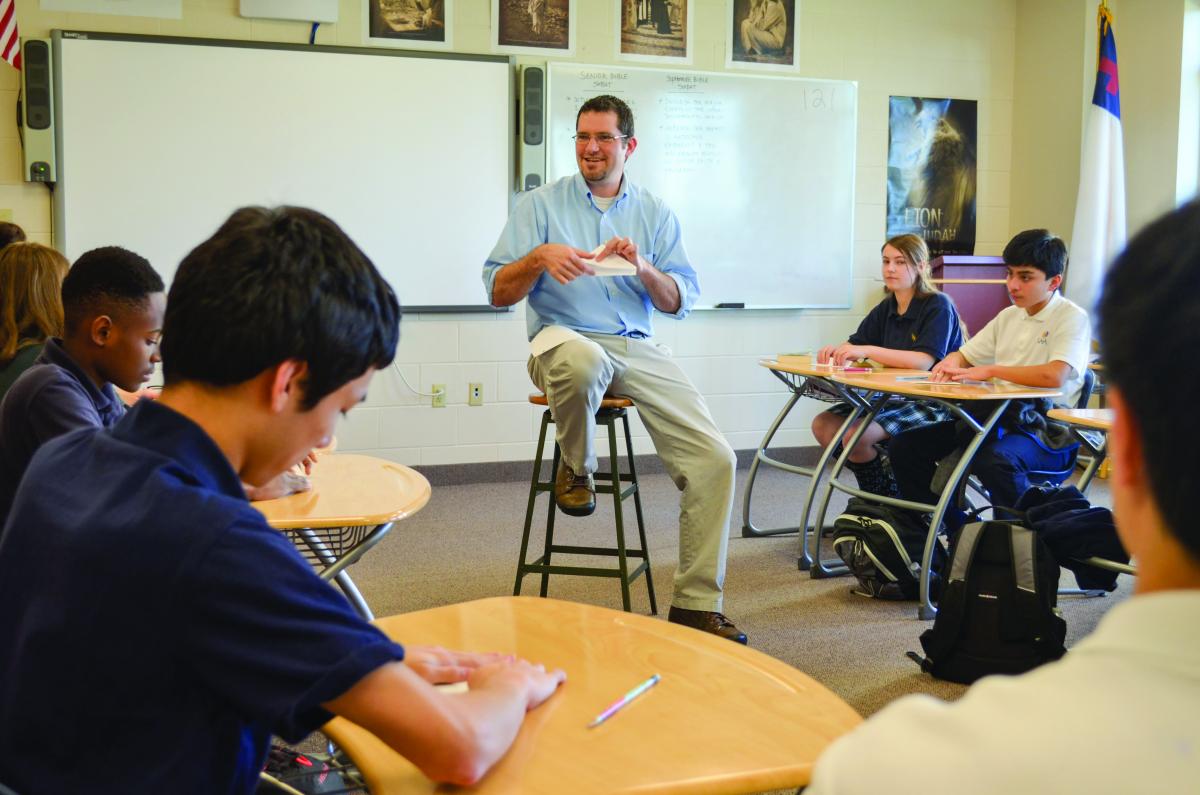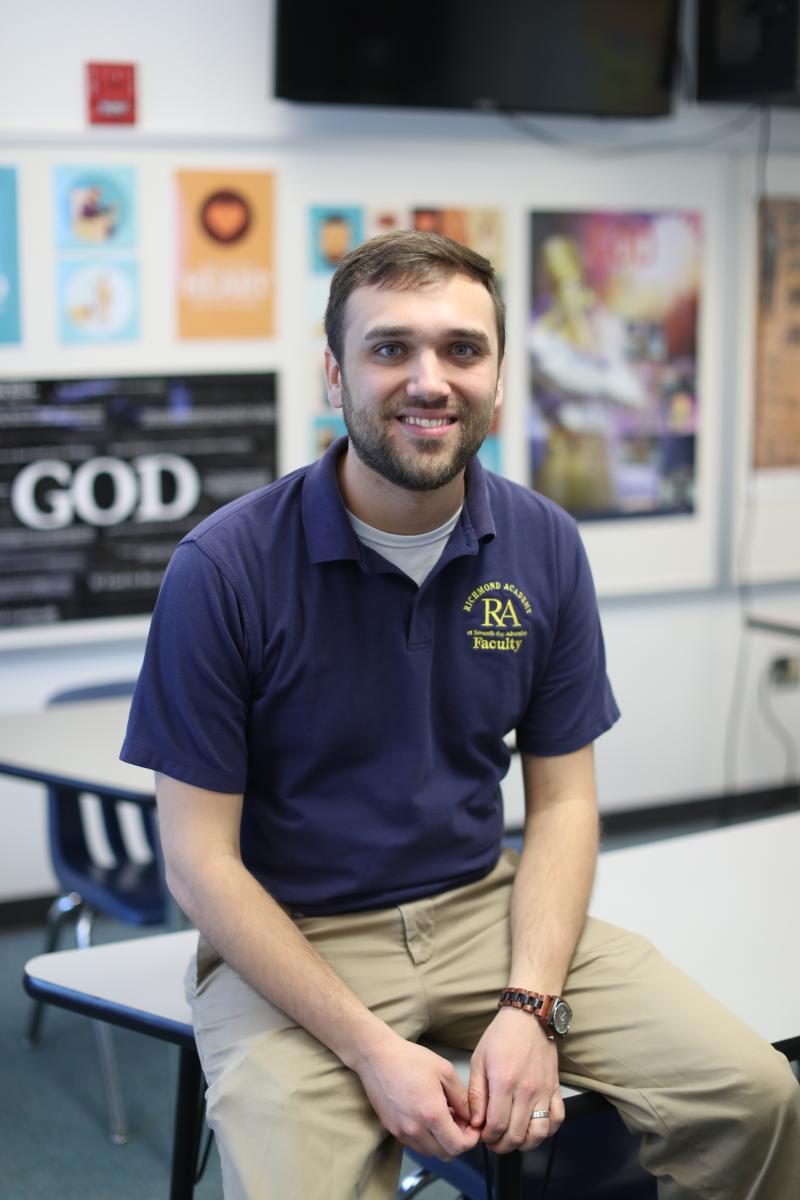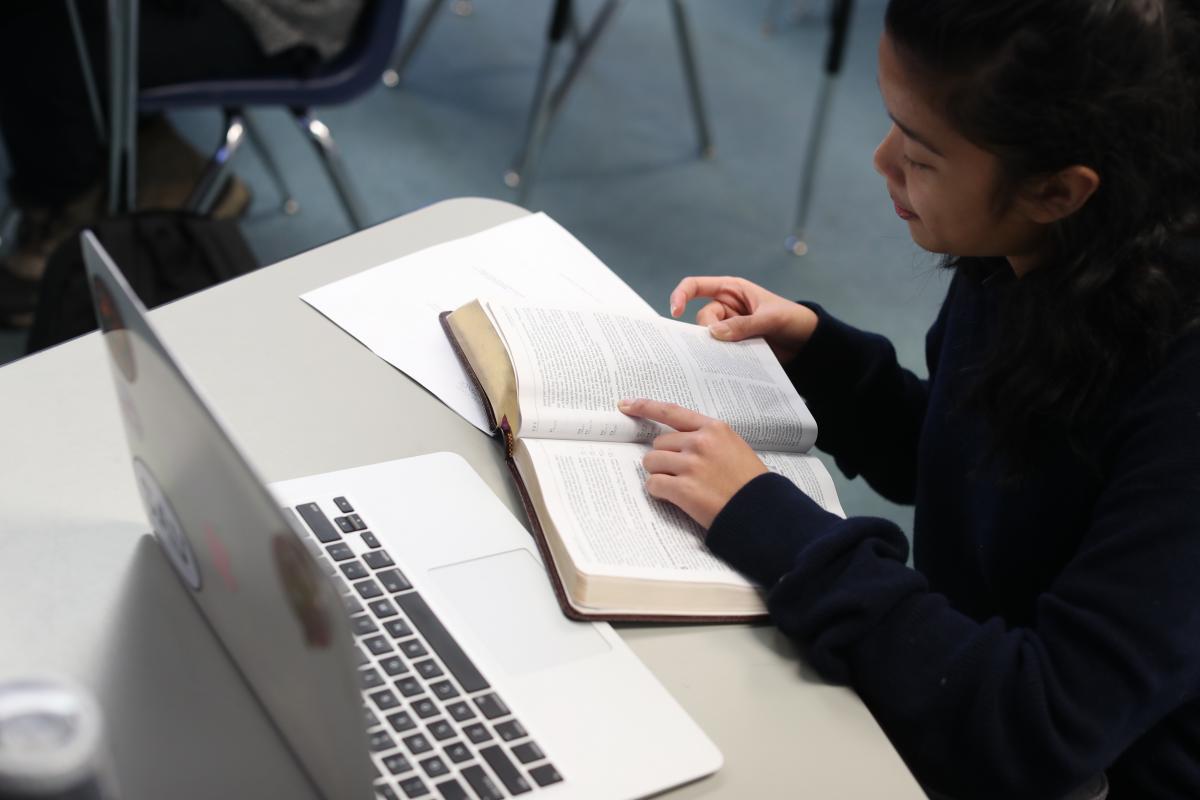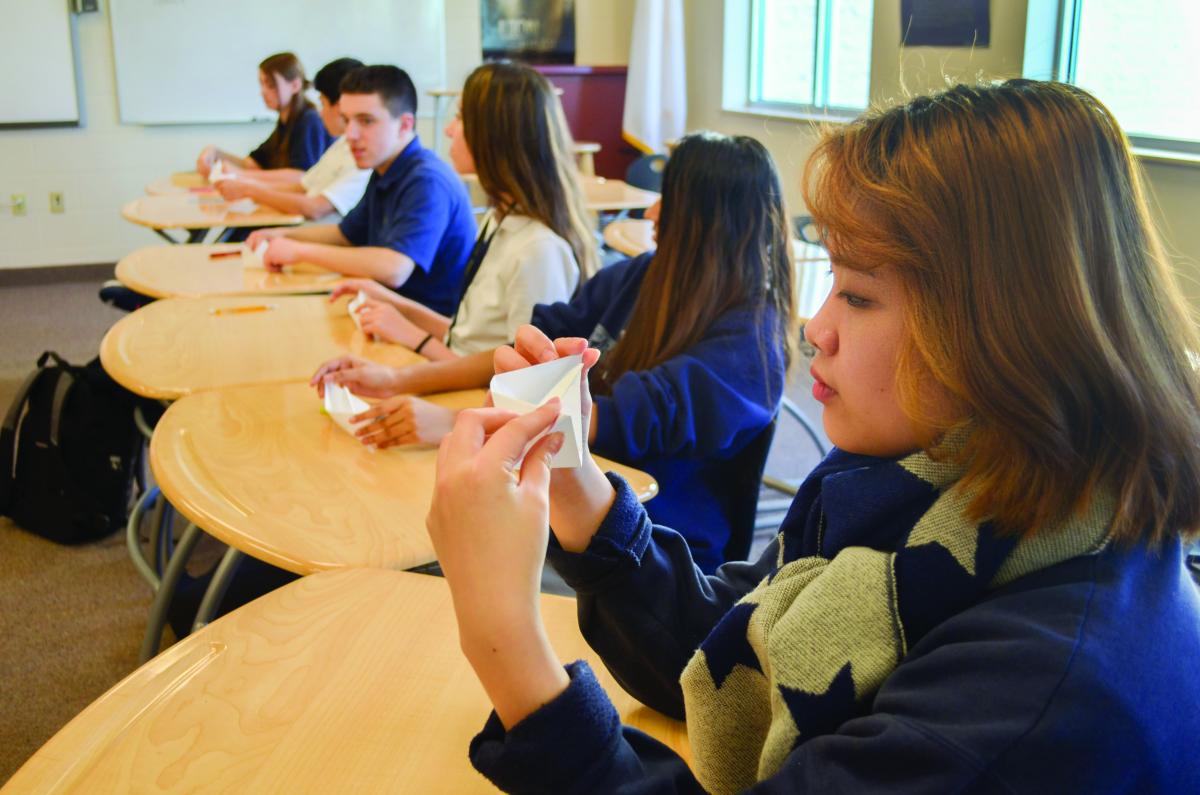
Close Encounters
 Story by David Pluviose / Photos by Andrew Shurtleff/AP and Kelly Coe
Story by David Pluviose / Photos by Andrew Shurtleff/AP and Kelly Coe
Columbia Union Conference schools are in the process of rolling out the Adventist Encounter Bible curriculum in elementary and high school classes. A key goal of this new curriculum, slated to be implemented in all union schools by Fall 2018, is to foster a deeper relationship with God and each other. The curriculum uses the Bible as the primary textbook, rather than the assortment of textbooks used by the old Bible curriculum, says Ileana Espinosa, associate director of elementary education for Columbia Union schools.
“The response has been phenomenal. Students love it,” says Espinosa. “There’s a feeling of genuine relationship with Jesus. Teachers are saying, ‘My spiritual experience has grown. I am a better person because of what I am doing with this curriculum for the kids.’ And the kids love it. We’ve already seen the difference here and across North America.”
 Jennifer Bianco, principal of the Pennsylvania Conference’s Lehigh Valley Elementary School in Whitehall, is one of the three Columbia Union educators who piloted the program in her classroom. She used the curriculum at the elementary level when she taught at Huntington Valley Christian Academy (pictured above) in suburban Philadelphia. She applauds Encounter for focusing on a relationship with God rather than just learning a story, which many say was the emphasis of the prior curriculum. However, Bianco adds that learning Bible stories is important, and students learn Bible stories via Encounter.
Jennifer Bianco, principal of the Pennsylvania Conference’s Lehigh Valley Elementary School in Whitehall, is one of the three Columbia Union educators who piloted the program in her classroom. She used the curriculum at the elementary level when she taught at Huntington Valley Christian Academy (pictured above) in suburban Philadelphia. She applauds Encounter for focusing on a relationship with God rather than just learning a story, which many say was the emphasis of the prior curriculum. However, Bianco adds that learning Bible stories is important, and students learn Bible stories via Encounter.
“But we also take it that step further and teach them what it’s like to have a relationship. It’s something that, as a teacher, [has] helped me with my relationship as well, because I had to read the lessons ahead of time,” Bianco says. “I had to reflect, because if I didn’t get the lesson, how was I going to teach it to the children? It actually helped me personally as well. I think it’s a fantastic program. I’m very excited for it to be rolled out for everyone to start using in all the grades.”

Tim Soper (pictured above), campus chaplain and religion teacher at Spencerville Adventist Academy in Silver Spring, Md., says that while he saw value in the old textbooks, “it’s easy for us to use those as the primary source. As Christians, and as Seventh-day Adventists, we’re ‘people of the Book,’” so the Bible “needs to be our first textbook.” Encounter does, so-to-speak, “force us as educators to help students learn how to study the Scripture as the primary source, how to make Scripture the central component, as opposed to just an add-on.”
He adds that the Encounter curriculum “has been good for me as a teacher, too, because it helps me to find ways to make the Scripture real, alive and help students learn how to study it.”
Give Me the Bible
The Adventist Encounter curriculum (K-10) was initially developed by the Australian and New Zealand Adventist Education Departments and has been taught in Australia and New Zealand for the past several years. The North American Division later hired Nina Atcheson, co-author of the Encounter curriculum, to create a curriculum for grades 11 and 12 in North America.
Arne Nielsen, director for secondary education for the North American Division Department of Education, says that prior to the implementation of Encounter, there “was a feeling that our young people were not getting into the Bible anymore. And there was a desire for them to dig a little bit deeper and to understand how to work their way through the Bible on their own.”
 When numerous supplementary materials are in play for religion instruction, it can sometimes “be a distraction from the Bible itself. The Bible is interesting and exciting on its own, so that’s the core textbook,” Nielsen adds.
When numerous supplementary materials are in play for religion instruction, it can sometimes “be a distraction from the Bible itself. The Bible is interesting and exciting on its own, so that’s the core textbook,” Nielsen adds.
Encounter also features a number of supplemental materials, including CDs and books. Yet the Bible remains the core textbook. Desmond Suarez (left), religion teacher at Potomac Conference’s Richmond Academy in Virginia piloted and taught Encounter for the past few years, and says one of its strengths is its flexibility. “The old [curriculum] wasn’t very flexible. It was pretty rigid, as most textbooks are.” Encounter is “designed to be able to plug and play
a little bit.”
Suarez also applauds Encounter’s emphasis on relationship. “For so long, we’ve thought that the facts are enough. … [The] information and facts are important, but they become empty if [students] do not have a relationship with [God],” he adds.
 One of the concerns with Encounter is that moving away from textbooks could lessen its value as an academic course. Yet Nielsen says that maintaining Encounter’s credibility as an academic course is key. “There is assessment built into Encounter. And so we assess in more ways than we used to. It used to be that you would take a quiz or a test, but we also assess now with portfolios, we assess with group activities and group learnings. We assess with essays. And so it’s a much broader assessment program than we used to have, but we’re covering all of the main standards from the old Bible curriculum. We haven’t missed a beat,” Nielsen says.
One of the concerns with Encounter is that moving away from textbooks could lessen its value as an academic course. Yet Nielsen says that maintaining Encounter’s credibility as an academic course is key. “There is assessment built into Encounter. And so we assess in more ways than we used to. It used to be that you would take a quiz or a test, but we also assess now with portfolios, we assess with group activities and group learnings. We assess with essays. And so it’s a much broader assessment program than we used to have, but we’re covering all of the main standards from the old Bible curriculum. We haven’t missed a beat,” Nielsen says.
Closing the Back Door
Certainly the backdrop to the rollout of Encounter is the vast numbers of youth who are leaving the church, says Espinosa. A 2016 Annual Council presentation by David Trim, director of Archives, Statistics, and Research for the worldwide church, pointed out that since 1965, around four in 10 Adventists have left the Church worldwide, a high proportion of them youth. In addition, a 2008 study revealed that the median age of a North American Adventist was 51.
 “We believe that with this new curriculum, we will be closing the back door and stopping our kids from leaving because they have now formed an intimate relationship with Jesus,” says Espinosa.
“We believe that with this new curriculum, we will be closing the back door and stopping our kids from leaving because they have now formed an intimate relationship with Jesus,” says Espinosa.
Bianco adds, “Ultimately, our goal is to allow the kids to know that the Bible is there for them, and through it, we can have a stronger relationship with Jesus Christ,” and though salvation is the ultimate goal, “we want them to stay in our church and be leaders in our church, and, if they’ve had this as an example through their teachers and those who are sharing the curriculum with them during their years of school, that’s something that they’re going to continue.”
Suarez says that there has always been a gap between the very young and the older members of the church, as young people begin to assert their independence and, in some cases, leave the church. Yet Suarez prays that “even if they do exercise that independence, that one day they will return.”
He adds, “If I can help lay that foundation, if this curriculum can help lay that foundation, then we might not always have them in the church, we might not always have them following God, but I’m praying that by the end, they will. That when they are old, they will return.”
David Pluviose is a journalist and graduate student in religion at Washington Adventist University in Takoma Park, Md. He writes from Richmond, Va.

Add new comment